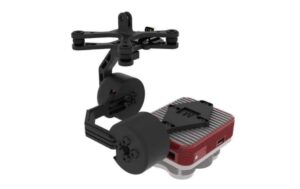


 Union Roboticshas integrated infrared cameras into the company’s industrial inspection drones in order to boost their capabilities for working in the energy sector. Union Robotics believes that UAV-based inspection solutions offer a level of versatility that is highly important to the industry, and the upgrade is part of the company’s commitment to offering both adaptive engineering services and technologically advanced UAV accessories.
Union Roboticshas integrated infrared cameras into the company’s industrial inspection drones in order to boost their capabilities for working in the energy sector. Union Robotics believes that UAV-based inspection solutions offer a level of versatility that is highly important to the industry, and the upgrade is part of the company’s commitment to offering both adaptive engineering services and technologically advanced UAV accessories.
Infrared cameras, with the ability to read temperature levels, provide inspection and evaluation abilities beyond those provided by the human eye. These cameras can diagnose problems such as energy loss due to insufficient insulation or sealing, and can also prevent problems by gathering information about substations and other elements of energy provision and by tracking changes in order to maintain consistent service. Power lines can be kept in good condition by recognizing and mitigating small issues before they go unchecked and escalate, thus forestalling larger repair costs.
Union Robotics’ Meadowhawk DE is an industrial UAV designed specifically for the utility industry. Built from ASTM F711-rated dielectric material, the drone is the result of two years’ research and development performed in conjunction with electric companies, helicopter utility pilots and UAV utility inspection contractors, in order to tailor a solution explicitly for use around high-voltage assets.
Ezekiel Bierschank, CEO of Union Robotics, commented: “The basic capability of UAVs to provide visual inspection is a fundamental safety and quality assurance advantage. But when you add the elements of accessories like infrared cameras, you get an added depth of benefit. UAVs are an important asset to the energy industry because of the heightened awareness. Infrared technology has become the latest tool to enhance the inspection process by making new data available to inspectors and engineers to better evaluate the infrastructure and its condition.”





Related Posts
New Drone Fires Thales Missile in Unmanned Air Combat Milestone
UAS Startup Accelerator Awards 3M in Funding
US Navy Orders Unmanned Tactical Resupply Aircraft